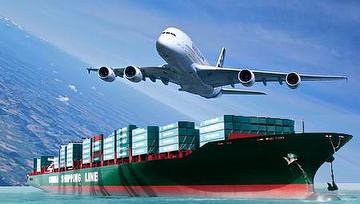
In the world of global forwarding, air freight and sea freight are the most commonly used modes of transportation. Choosing the correct mode of transport can be tricky. It’s often a question of time and money. You probably want to strike a good balance between the both. To ease your decision we have put together a number of key factors to consider before making your decision. How do you choose between air and ocean freight? In general terms, air will be faster but more expensive while ocean will be slower and more cost-efficient. Beyond these generalities, however, there is much to think about.
Before you finally choose which mode of transportation to use at any point, consider the following;
1. How urgent do you want the item:
At Edas Global Supply Chain Limited, we grade RFQs as urgent, semi urgent and not urgent. We get this feedback from the customer to know which mode of transportation or urgency of item to apply. Airfreight is always costlier and faster than sea freight. Even within airfreight, there is express delivery which is the costliest of all freights. Customers choose modes which suit their needs at that particular time.
If customers choose sea freight, it simply means they can wait for at least from 10 days to 2 months for the item to arrive or even more if it is a consolidated cargo as ocean freight depends on distance and available services at that time The urgency of your cargo is the first factor to consider in deciding between air freight and ocean freight given the fundamental difference between sea freight and air freight is speed. Air freight typically range from a few up to 10 days, taking into consideration holding time at airports, routing and awaiting available aircrafts and handling at origin and destination.
2. Inventory considerations:
Air freight is also best if you want to reduce inventory levels where warehouse space is particularly expensive. Regular flight schedules allow you to pull products into your warehouse on an as-needed, just-in-time basis. So the extra cost of air transportation is partly offset by the savings made in reducing stock holding.
3. Cost implications:
Transportation takes up a large part of expenses in business, this is the reason why businesses have to make informed decisions on choosing the most affordable freight option to improve their financials . To find the cheaper freight option, you need to understand how air and sea freight fees work. Airlines use chargeable weight calculated from a combination of the weight and size of a shipment. Sea carriers, on the other hand, use per container rates for shipping in standard containers.
For larger and heavier shipments, sea freight is cheaper. As the size and weight of a shipment get smaller, air freight becomes the cheaper option. On paper, using an ocean carrier is the cheapest freight shipping. However, you have to consider that warehousing fees at seaports are higher than at airports. Comparing the actual cost of shipping is not easy. Those customers that are going to ship content that is less than a full container are likely to be charged using a cubic meter measure. That means that if you have large and heavy shipments, consider sea. However; as your shipments get smaller, you will find that the margin price differentials keep reducing. There may come a time when a flight is the cheaper option.
It is also important to think about the destination charges. For example; you may be subjected to customs and destination fees that were not originally within your budget. Those that are using ocean liners need to consider the costs of warehousing fees which are typically charged at the seaport. These fees can outstrip anything that the airport will charge.
4. Contractual obligations:
Consider if you’ve got any obligations to your customers contractually. If your buyer requires a product before a certain date, you may find that a fast air freight solution is the option to choose. Conversely, perhaps there is a contractual obligation to keep costs to a minimum, in which case the answer may be to use sea freight.
Generally speaking, there is no preferred option when it comes to choosing whether to use sea or air freight, it all depends on the items that you are shipping and the urgency of these items getting to their final destination. The speed and reliability of delivery needs to be considered alongside the need to maximize your profit margins. The major reason to choose air service is the speed of delivery. Moving your cargo through the air allows for a truncated timetable compared to ocean service. This is particularly useful when shipping items with short shelf lives. However, the price for faster service is often higher transportation costs. It’s up to your business to determine what makes sense for your shipping strategy at any point in time
Evaluate when your goods need to arrive at their destination, what your budget is, and how each mode will affect your business’s top needs.
If your shipments have a hard, quickly-approaching arrival deadline and your budget allows, ship via air. If you have more arrival date flexibility or want to save money, ship via ocean.
Contact Edas Global Supply Chain Limited, we will help you make that decision and also freight the items whichever mode of transportation you choose. Email us via info@edasglobalsupplychain.com or call +2347089921886.
